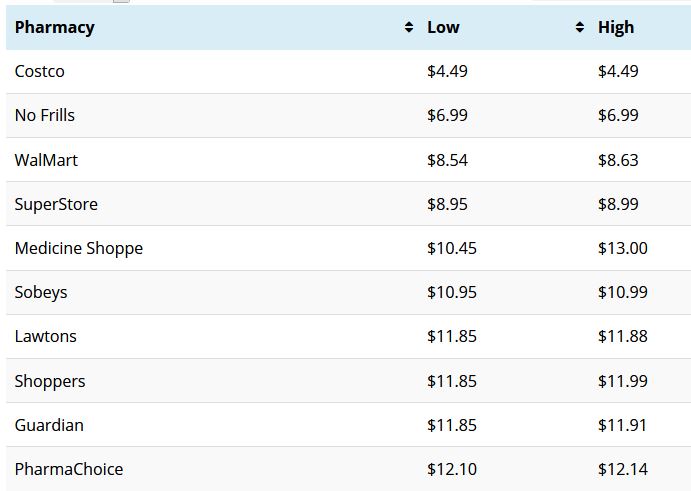
When I retired in 2014, after being a contributing member of the Public Service Superannuation Plan for 32 years, I began collecting a provincial government pension. The promise of a pension had become very important to me over the last decade or so of my career as eventual retirement loomed and I began wondering what life without a paycheck would be like. Finally I would be free of having to cope with daily life in a bureaucracy and thanks to both the pension and my frugal way of living I would be pretty worry-free. Things don’t always work out like that of course, and early in 2020 us pensioners received word that our pensions would be frozen for the next 5 years. In our new suddenly inflationary environment, that was not good news.
My pension and those of over 30,000 other members who are either paying into one because they are still working or collecting one in retirement is administered by the Nova Scotia Pension Services Corporation (PSC for short). That was an agency created in 2013 from what used to be the Nova Scotia Pension Agency, which was a government operation connected to the Department of Finance. Some history is in order before continuing here.
Back in 2008 after the global financial meltdown, both the Public Service Superannuation Plan, or PSSP (for civil servant pensions) and the Teachers Pension Plan were in rough shape in terms of the asset to future liability calculation, known as the funding ratio. The Teachers plan had been in trouble for a very long time. It is a different animal than the PSSP. Back in the ’90s it adopted a joint trustee structure between the government and the NSTU. In the mid-2000s a number of changes were made to try to bring it back to financial stability and those helped a bit, but the 2008 crash really set it back and it has been trying to recover ever since.
In contrast, the PSSP always had the Minister of Finance as the trustee, meaning that the government backstopped the pension plan and was on the hook for any underfunding. The Department of Finance managed the investment portfolio of the plan and administered the plan for its members, just as they did for the Teachers Plan. In 2006 that function was spun off into a special operating agency called the Nova Scotia Pension Agency. Incidentally the Acting CEO of that agency for the first couple of years was John Traves, then a provincial Justice Department legal counsel, now HRM’s top lawyer. In 2008 a financier from State Street Bank in Boston, Steven Wolff, was finally recruited to take the job. According to his LinkedIn page, he left that job in 2016 to become President and CEO of TD Mellon in Toronto, and was replaced at PSC by another ex-Dept. of Justice lawyer.
Although (as stock brokerage commercials like to say in the fine print) past performance does not guarantee future results, the PSSP was in far better shape than the Teachers plan. Indeed, in the late ’90s, it had done so well that the Province issued this news release:
Pension Contribution Holiday Confirmed
https://novascotia.ca/news/release/?id=19981125002
Finance (to Oct. 2013)
November 25, 1998 – 2:17 PM
Independent actuaries have confirmed that the public service pension fund has a surplus large enough to afford planned pension improvements and contribution holidays.
“The actuarial report shows the public service plan was in surplus as of Oct. 31, 1998, and would still be in surplus if the contribution holidays and pension improvements had been made on that date,” said Finance Minister Don Downe. “Accordingly, I am announcing that the measures will now go forward.”
The Public Service Superannuation Plan moved into surplus two years ago. Last spring, the province reached agreement with the Nova Scotia Government Employees Union to have a contribution holiday for fiscal 1997-98.
In the budget for 1998-99, the government announced it would also be suspending contributions for the current fiscal year and would be making substantial improvements to pension benefits. The most significant measure is to increase survivors’ benefits to 66 and two-thirds per cent from 60 per cent.
The legislation allowing the contribution holidays to proceed was passed by the legislature Nov. 9.
…
Government employees will receive the pension-holiday amount on the second paycheque of January. The contributions for 1997-98 were paid out in June of this year.
The PSSP had reached a funding level of 108% prior to the pension holiday, so somebody was either very lucky or very good at investing. A couple of years later the dot-com bubble burst, markets went south, and it took a while to recover. Just when things were looking up again, the 2008 crash happened, so when the NDP government arrived in 2009 both pensions were in rough shape.
As Finance Minister, Graham Steele would have received a briefing on top issues from senior staff at Finance shortly after arriving. This is speculation on my part, but I would guess that the state of the pension plans and the provincial liability for them would have been on that list. Combined with all the other financial issues the province was facing at that time, he started taking some pretty big swings at things, like increasing the retail sales tax rate. Soon the PSSP and its liability became something he wanted to get the Province out from under, likely spurred on by dire warnings from the accountants at Finance of what could occur if nothing was done. Given the uncertainty in the financial markets back then, I have little doubt that the economists were feeling quite dismal.
What transpired over the next couple of years was remarkable. Legislation was written to remove the Minister of Finance as sole trustee of the PSSP, meaning that the government no longer backstopped the plan, changing the basic premise of a government pension. It created several new corporations, one of which would act as trustee for the Teachers plan and another for the PSSP. Legislation also converted the Pension Agency into a third corporation, the Nova Scotia Pension Services Corporation, to manage the assets and administer the operation of retiree pensions. Very detailed legislation was also passed that defined how the PSSP would operate going forward in terms of funding ratios and indexing of benefits, and greatly limited what those appointed to the Board or employed by the PSC could do in those areas.
Remarkably, the Pension Services Corporation Act took great pains to distance it from the Province. It explicitly states that it is not an agent of the Crown, it is not a Crown corporation, it is not a government reporting entity, it is not a public body, it is not subject to FOIPOP provisions, and that its employees are not an “officer, servant, or agent of the Crown” despite 50% of it being owned by the Province and the other 50% being owned by former employees of the Province. Of course, their landline telephone numbers remain in the government 424 exchange and unionized employees there are still members of the NSGEU and the PSSP itself, but lets overlook that. To me, the most remarkable provision is found near the end of the legislation:
Regulations
45 (1) The Minister may, with the approval of the Corporation, make regulations
(a) respecting any matter authorized by this Act to be done by regulation;
(b) defining any word or expression used but not defined in this Act;
(c) the Minister considers necessary or advisable to carry out effectively the intent and purpose of this Act.
So, a Minister cannot actually do anything directly in regard to this body that they created unless the PSC approves. It is like a provision saying that my former employer, the NSLC, needs to approve anything that the Minister responsible wants to do. It is rather mind-boggling. The only certain way government could affect anything at PSC is to amend the legislation itself, a much more difficult process. In reality, the Minister could likely direct the Board chair and the 6 government Board members to make such changes, but this remains to be seen since I doubt it has ever been tried.
The Public Service Superannuation Act outlines in excruciating detail how payments and indexing, if any, is to be determined. The emphasis throughout is biased towards maintaining a funding ratio of at least 100% and protecting that going forward with reserve funds. Only if those are both satisfied can indexing be considered, and in any likely scenario, the best one could possibly hope for is 50% of the CPI, with most other scenarios offering less than that. The Act also locks in any resulting scenario for a 5-year term based upon a single point in time at the moment of decision, a very rigid stance. In my case my first 5 years of retirement got me indexing of 0.5% annually, amounting to a lunch out once a month. Yippee!
Something interesting happened at the end of 2019 when that 5-year cycle was coming to an end. The Fall 2019 pension newsletter blithely reported that as of the date it was published, the plan was fully funded at about 104% thanks to very good returns on investment that year. Good news for us pensioners, right? Not so fast. Between the year-end and March 31, 2020 two things happened. One was the COVID crash that drove investment markets down sharply at the end of March. Those recovered totally over the next few months, but that didn’t matter. The other was that the actuarial review of the plan done in early 2020 deemed that the discount rate – which is the percentage by which the calculated future obligations to members can be reduced given future returns on investments – be reduced by half a point. That meant that with the stroke of a pen, the plan was now 98.5% funded. What a coincidence! No indexing for you pensioners for the next 5 years.
The emphasis on requiring 100% funding (or something close to it) for pension plans makes sense if the plan is in the private sector. Companies can go bankrupt or encounter hard times, and you want pensioners and future pensioners to be protected if that happens. But we are dealing with the public sector here. That is unlikely to go away any time soon. Those who are either collecting a pension from the PSSP or expect to do so were hired on by the government and the pension provisions were a promise made at the time, which included some degree of indexing. Now that is no longer quite the case since future pension payments are very much unknown. Back when the province administered the pension themselves, the funding shortfall, if it existed in any given year, was simply recognized as a line item on the provincial books. If the plan was in surplus as it was in 1998 and no doubt other years, a different entry was made on the books of the increased value. No money actually ever changed hands; it was simply an accounting line item that could be positive or negative. The plan itself generated all the cash it needed.
But there is one small group that likely quite enjoys the new way of doing things, and that is the management group at the Pension Services Corporation. If the pension plan itself had enjoyed the kind of increases they’ve been getting all of us would be living very well. It is really quite staggering.
According to their annual report a group of about 20 managers at PSC divvy up a bonus pool of about $750,000 in incentives each year. Government did away with management bonuses about 10 years ago, but of course these folks aren’t government employees any longer, though they used to be in most instances, and apparently the Board didn’t get that memo. Also unlike government, the PSC are not subject to compensation disclosure (or “sunshine list”) requirements, but they do list compensation of their top three executives in their annual report, so I guess we should be grateful. All three are former civil servants.
| CEO Salary + Incentive: | ||||||
| 2016 | 2017 | 2018 | 2019 | 2020 | 2021 | 2022 |
| 150831 | 231645 | 438840 | 438840 | 457190 | 491507 | 529712 |
| Total % Increase: 251% | ||||||
| Chief Investments Officer Salary + Incentive; | ||||||
| 2016 | 2017 | 2018 | 2019 | 2020 | 2021 | 2022 |
| 234405 | 238317 | 242353 | 269315 | 297108 | 321760 | 290974 |
| Total % Increase: 24% (Note: Retired March 2022) | ||||||
| Chief Pensions Officer Salary + Incentive: | ||||||
| 2016 | 2017 | 2018 | 2019 | 2020 | 2021 | 2022 |
| 156657 | 160361 | 164736 | 182079 | 201855 | 223349 | 245417 |
| Total % Increase: 57% | ||||||
I can understand the compensation levels for the Investments person, and the Pensions Officer is more of a COO position so it may not be too out of line either, but the CEO? Wow. Just, wow. Jackpot, baby.
If this was a position still in government there is little possibility something like this could have happened. But since they are explicitly “not government” despite all appearances to the contrary, there is little that can be done without a change in legislation. It is utterly tone deaf, and makes zero indexing of member pensions taste even more sour to those who rely upon them.











